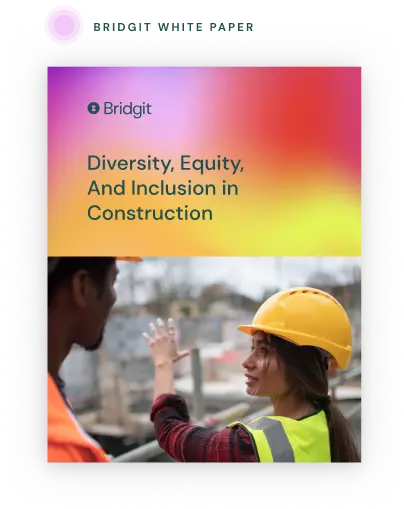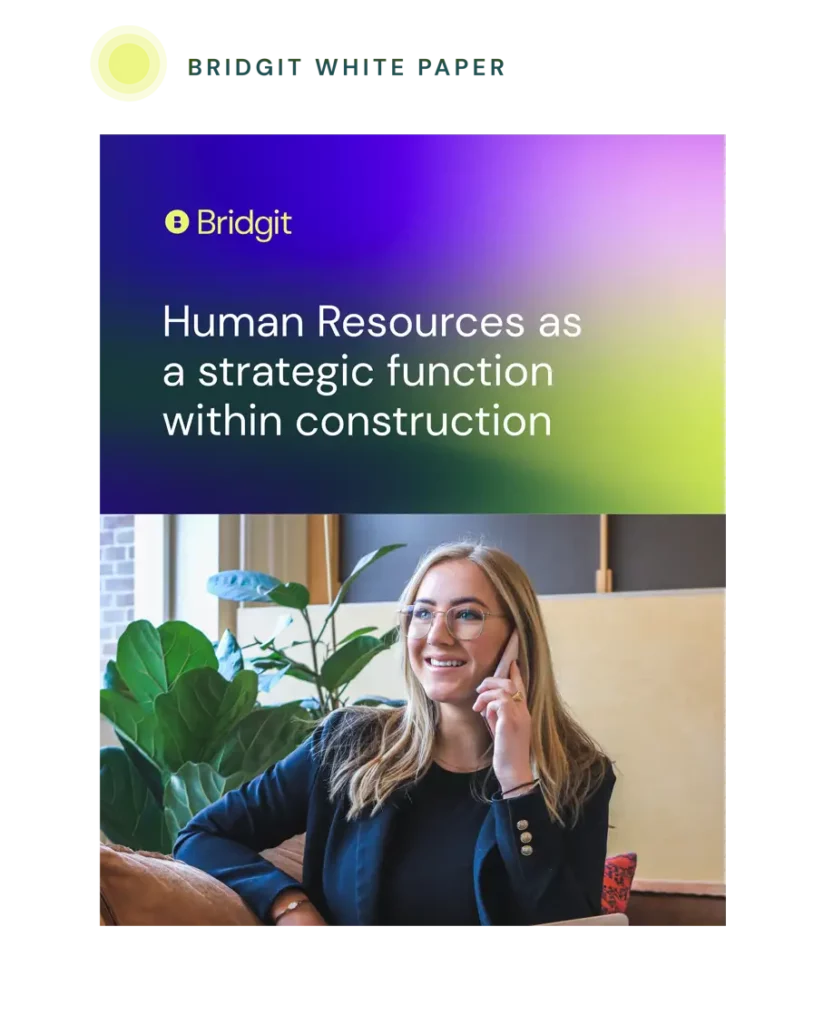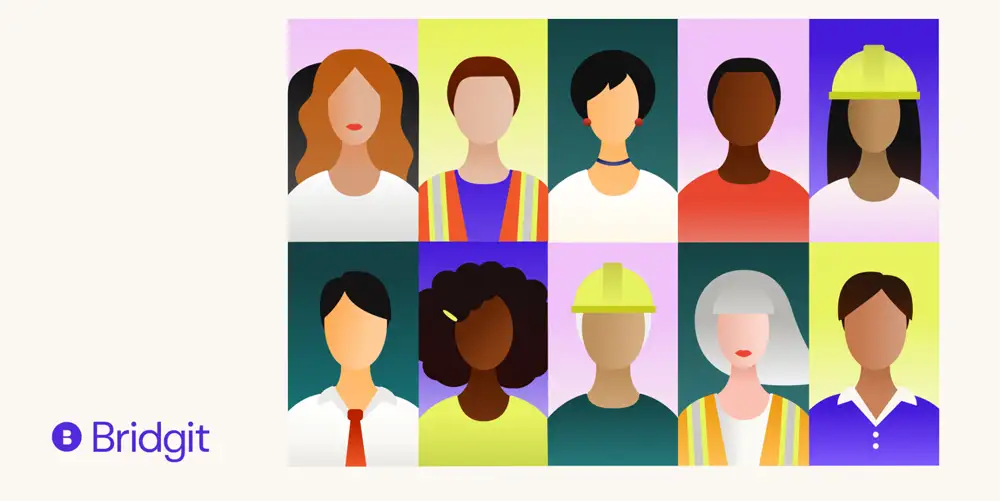If you’re curious about the role of diversity in construction and how it can help address the labor shortage, this article is your answer.
As construction projects continue to increase in number and complexity, companies face the challenge of attracting and retaining a skilled workforce. The labor shortage is a significant concern that needs to be addressed urgently, and promoting DEI in construction can be a powerful solution.
Table of Contents
Construction companies have been grappling with labor shortages for some time now, which hinders their ability to meet project demands efficiently. A diverse workforce can bring about numerous benefits, including increased creativity, better problem-solving, and enhanced job satisfaction, leading to improved productivity and project outcomes. Moreover, with an aging workforce and an expected wave of retirements in the coming years, attracting new talent from diverse backgrounds is vital in ensuring future success.
This article delves into the current state of diversity in the construction, highlighting the challenges and opportunities associated with promoting DEI. It also explores the impact of diversity and inclusion on various aspects of the industry, from problem-solving to productivity, and discusses the obstacles that hinder progress. You’ll also get practical strategies for enhancing DEI for your company, enabling you to address labor shortages and create a more innovative, inclusive, and productive workforce.
Current state of diversity in the construction industry
As the demand for projects continues to rise, contractors and their HR departments must consider how to stabilize their available talent pool. They face a choice: maintain the status quo or take action to bring about change.
One approach to drive change is investing in broadening the talent pool by promoting diversity in construction. The possibilities of equal representation in the construction talent pool are endless.
The U.S. Bureau of Labor Statistics provides the following data on representation in construction:
- 11% Women
- 6.7% Black or African-American people
- 2.1% Asian people
In comparison, the actual representation in the U.S. population is:
- 50.52% Women
- 12.2% Black or African-American people
- 5.6% Asian people
If those segments are represented in the total construction employment across the U.S equal to their respective populations, millions of people could potentially be added to the talent pool. If you’re looking to deal with the labor shortage directly, actively recruiting diverse team members and making the effort to have an inclusive culture might just be the best path forward.

Addressing diversity, equity, and inclusion in construction with empathy
Download our white paper to see the industry’s challenges in attracting and retaining talent from historically underrepresented populations.
Challenges of promoting diversity in the construction industry
While envisioning a diverse workforce is simple, putting it into practice requires effort.
A survey by the National Institute of Building Sciences revealed that although 43% of respondents from various groups said their company had established a DEI program, 66% reported experiencing gender or racial discrimination in the workplace.
This indicates that the construction industry has a long way to go in creating a welcoming and safe environment to attract and retain workers from different backgrounds and identities.
The impact of diversity and inclusion in construction
Effectively implementing diversity and inclusion is crucial for addressing the labor shortage and resolving some of the construction industry’s primary challenges. Here’s why:
- Fosters creative problem-solving: Workers from diverse backgrounds with different experiences are likely to propose and introduce new, innovative solutions, which can be extremely beneficial when projects are in a bind.
- Reduces productivity risks: The construction industry grapples with sluggish productivity growth, leading to time and cost overruns and subpar performance. A larger talent pool can boost productivity.
- Improves job satisfaction: Diversity initiatives can promote greater engagement, resulting in improved worker retention and reduced turnover. A study found that employees satisfied with their company’s commitment to diversity were twice as engaged.
Obstacles to diversity in construction
If diversity, equity, and inclusion offer so many advantages, what prevents companies from prioritizing them? Here are some common reasons for the lack of diversity in construction firms:
- Uninformed or unconvinced decision-makers: Recruitment and hiring practices require the approval of key decision-makers who may be unaware of the benefits of diversity or believe it’s not worth the investment. This can hinder a firm’s overall growth.
- Inadequate policies for worker retention: To ensure employee satisfaction and retention, firms need to reevaluate or establish policies regarding maternity and paternity leave or develop programs for employee education.
- Inability to prevent harassment and violence: Hiring from diverse backgrounds is important, but so is creating a safe work environment. Implementing zero-tolerance anti-harassment and discrimination policies can help curb the violence that is all too common in the construction industry.
Change will take time, but it is possible
The time to prioritize diversity in construction is now. Expanding the talent pool will require time and effort, which the industry must invest in. Over the next decade, the National Center for Construction Education and Research estimates that about 41% of the workforce, including many in management positions, will retire.
If this isn’t convincing enough to reassess your company’s diversity initiatives, consider the following findings. Deloitte reports that companies that prioritize diversity and inclusivity across all industries are:
- Twice as likely to exceed financial goals
- Six times better at anticipating and responding to change
- More likely to generate 30% more revenue per employee
Similarly, McKinsey states that diverse organizations achieve 35% better results on average.
Glassdoor reveals that 76% of job seekers view diversity as important when evaluating job offers, and even assign diversity scores to companies. One-third of job seekers would not apply to a company lacking diversity, which increases to 41% among Black or LGBTQ job seekers.
Implementing change will take time and require leadership buy-in. A comprehensive approach to improving construction diversity involves more than just inviting individuals from different backgrounds to interviews.
8 ways to improve DEI
Consider implementing these strategies:
- Conduct exit interviews to understand why team members are leaving.
- Establish a referral program with your current team, emphasizing the desire for diverse applicants.
- State in job descriptions that you’re an equal-opportunity employer, demonstrating the importance of inclusivity.
- Get creative with job postings by understanding your workforce’s interests and preferred platforms.
- Use inclusive language in all communications, avoiding exclusionary phrases that may impact your culture and construction diversity.
- Avoid privilege in prerequisites by not requiring expensive courses or certifications that may deter skilled candidates. Offer necessary training to those with the skills you need, which will yield long-term benefits.
- Set goals and track progress by auditing your current work environment and identifying areas for improvement, but avoid setting quotas that may alienate diverse team members.
- Showcase your diversity through website images and leadership profiles, which can help diverse candidates envision a future at your company.
For more insights, explore related articles on diversity in construction, women in construction, and the push for more inclusive terminology. By prioritizing diversity, equity, and inclusion, the construction industry can tackle the labor shortage and foster a more productive, innovative, and inclusive workforce.
Track DEI metrics using Bridgit Bench
Bridgit Bench is the leading workforce planning platform built specifically for construction. Our platform is fully customizable and helps operations and HR teams track any data relevant to their organization. This includes project histories, skills and experience, certifications, and any DEI metrics you might be hoping to track.

Human resources as a strategic function
Download our white paper to read about turning your human capital into a lever of organizational success
- Breaking down information silos
- Putting employee engagement first
- Considering DE&I as a core goal


